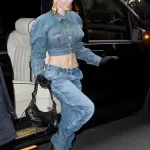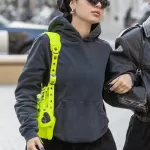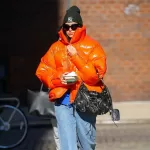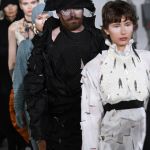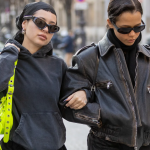
What does 'Cagole' really mean?
The etymology behind Balenciaga's new it-bag
June 15th, 2022
It was the year 2001, a young Nicolas Ghesquière had arrived at Balenciaga four years earlier and the brand launched Le Dix Motorcycle Bag, known as City. Rumour has it that when the designer presented the prototype of what has become the brand's best-selling it bag, top management were unsure, judging the model too shapeless and lacking in logos to outshine its competitors at a time when Louis Vuitton's LV Monogram or Gucci's GGs were gaining ground. In fact, in each of its variants, the accessory became a true cult, as did its distinctive features: no visible logos, monograms or prints, but a series of flat, simple studs and a zip at the front containing a small, removable mirror. Intercepting the Y2K nostalgia that is driving the aesthetic and style choices of Gen Z, the Le Cagole bag takes the characteristics of the it bag that defined the brand's aesthetic for more than two decades and takes them to the next level, maximalism to the extreme.
Studs, woven straps, a flashy mirrored heart-shaped charm and a distinctive half-moon shape, similar to a croissant, a captivating rock chic mood, available in four sizes and a wide range of colours from lilac to pastel blue, from yellow to vibrant orange. Every element seems to be designed to make it the season's new must-have item, starting with the name, a term of Provençal origin that in slang indicates a cool, extroverted girl, but a little "over the top", with a penchant for drama and histrionics, just like the DNA of the new it bag. But where does this word come from and how did it spread in Marseille and most cities in the South of France to indicate a rather widespread stereotype?
«I wear very tight clothes: very short skirts, bare backs and very plunging necklines that reveal some of my tattoos - I have a dozen of them: drawings, phrases, song titles. Among them, some indelible mistakes of youth that I try to hide as best I can, even though my clothes don't cover much. I wear mostly black, but I do allow myself some eccentricities: a pink fur jacket, a rhinestone bag, a pair of sequined shorts... And I never go out without my heels, at least six inches high. If the day is going to be long, I treat myself to a pair of wedges» - these were the confessions of a Cagole girl from Marseille in 2016 on Vice.
A Cagole is a female stereotype, the term is associated with an outgoing, provocative, self-confident, loud person who likes to be the centre of attention. In the documentary Cagole Forever, released in 2017, it is described as 'an icon of Marseille'. In fact, the French city records the highest temperatures at the height of summer and here people like to reveal their tanned, often tattooed bodies, wearing bright and flashy clothes, preferably leopard print, as well as the ever-present exaggerated make-up complete with glittery lip gloss, long and colourful nails and perfectly shaped eyebrows. The etymology of the term hides two hypotheses that intersect to give a singular definition. The noun would derive from the French word 'caguer' and would therefore be a person who 'annoys' others with his way of being. Another explanation is that the term actually refers to an apron called 'cagoulo' worn by women in the 19th century in date packing factories. A light dress that became a characteristic symbol of the region and of all those female employees who were forced to prostitute themselves to make ends meet; hence the term has often been used over the years as a synonym for prostitution.
@itsonyali a questo punto, non ci resta che comprarla
original sound - ༺༻
From the Marseille Cagole to the British Chav, to the Parthenopean Vrenzole, the fake tanned aesthetic of a skimpy, over-the-top woman is an aesthetic catchphrase that has often inspired designers, often also driving the rise of trends and entire brands, from Burberry's check to the success of the Nike Air Max 95. Demna, the creative director who has perhaps most attempted to integrate subcultures and mass trends into a distinctive pop iconographic form, has played with the excesses of French provincialism and transformed them into high fashion. The new campaign stars Isabelle Huppert, Justin Bieber and, above all, Kim Kardashian, portrayed inside her Calabasas home in total black with a neon green Le Cagole. Result? According to Highsnobiety, in the 24 hours following the release of the campaign, there was a 325% increase in searches for 'Neon Green Bags'. For Balenciaga, More is More.



















































